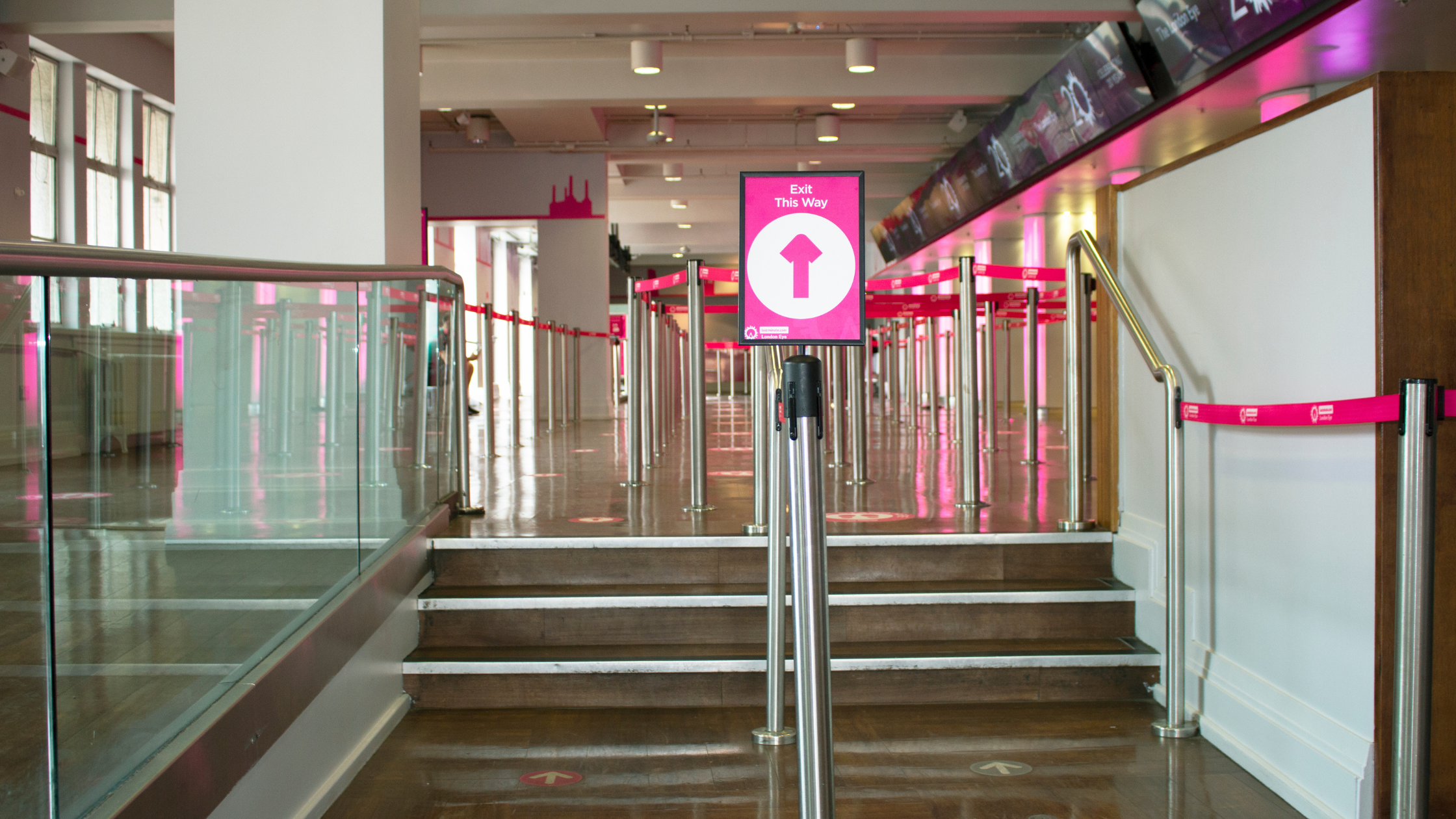- Home
- Sectors
- Solutions
- Tensabarrier®
- Tensamedia® Wayfinding and Signage
- Lawrence® Post & Rope
- Tensator® Airport Passenger Guidance System
- Electronic Queuing – eQ™
- Tensaguide® Modular Barrier System
- Tensator Micam Protection – TMP
- Safety Solutions
- Access Control
- In-Queue Merchandising
- Virtual Queuing – VQMS
- Tensator® Virtual Assistant
- Custom & Bespoke Solutions
- Resources
- About
- Contact Us
- Shop
 English (English)
English (English)
Why retail technology shouldn’t be brushed under the carpet
23
Jul

The last decade has seen a technological revolution in the retail sector. However, despite an abundance of in-store technology at their disposal, are furniture retailers arming themselves with everything required to reach their full potential?
Here, Ajay Joshi, head of media at customer journey specialist Tensator, shares his thoughts and explains why, for the furniture sector, this is a revolution that is just beginning.
There’s no shying away from the fact that budgets have been tighter and furniture and homeware retailers, based both on the high street and retail parks, have been fighting a battle with their online counterparts. Operational efficiency has been key.
This is why we’ve seen an uptake in technology such as self-serve and automaton. Consumers feel as though they’re taking control of their own retail experience and retailers have been able to save money on resources.
We’re certainly seeing this self-serve approach at larger format stores such as IKEA and the likes of Argos have kiosks allowing customers to place their own order rather than doing so via a staffed till point.
Some of the technology we’ve seen introduced has also been a reaction to the changing needs of the consumer. They’ve become savvy to traditional selling methods and POS, so other marketing avenues have been explored. This is why we’ve seen the introduction of solutions such as digital signage.
Marketing messages now appear alongside frequently ask questions and store information. It’s about making the consumer feel more like they’re being educated and less like they’re being sold to.
This need for new, innovative ways of marketing continues to evolve. You only have to look at products such as our own Virtual Assistant, a digital signage solution that creates the illusion of a real person, to get an idea of how fast this market is progressing.
The furniture and homeware sector has most definitely had its fair share of innovation in terms of taking a new approach to customer engagement. A great example is the 2013 IKEA catalogue, which has an in-built digital layer, allowing customers to use their mobile phones to access an Augmented Reality feature.
This allows potential customers to see inside cabinets and wardrobes, enjoy animated scenes that appear on the page and see alternative furniture layouts. It’s ultimately designed to give the consumer a better understanding of what they actually want before heading into store.
However, there’s still a lot more that can be done and, for me, no retailer is yet to crack a cost effective way to smoothly and efficiently guide consumers through a store and try new brands. The age-old question of ‘what makes people buy?’ is still to be answered.
The next few years will see the industry moving closer to finding that solution and I believe the secret lies in the pocket of the consumer or, to be more precise, their mobile phone. Something that IKEA has clearly already latched on to.
In retail, there remains two very distinct customer journeys; one for those who shop online, and the other for those who venture onto the high street. The commercial Holy Grail would be to merge the two and mobile technology has that ability.
Until now, it’s been a fairly untapped resource, but I’m confident we’re about to see an explosion in the retail app market.
They will be used as a CRM tool, allowing furniture retailers to build a fully rounded profile of the consumer. So, whilst the consumer gains an easy and convenient way of remotely placing an order to pick up in-store or book an appointment for an in-store service, such as a consultation with an adviser, the retailer gains valuable information on shopping habits.
To some extent we’re already seeing this in the grocery sector, with the likes of Tesco sending Club Card customers vouchers for items they regularly purchase. There is no reason why furniture retailers cannot take a similar approach too.
Personalised shopping will be the buzzword and, through app development, we have a way to almost offer a concierge service, whereby customers are guided through a store towards products that match their profile.
Many of the basics are going to change too as retailers continue to look at ways of increasing efficiency and decreasing the risk of walk-aways.
Consider standard service point queuing in larger format, warehouse style, stores. Up until now, it’s been the norm to have a multiple queue structure, with lines formed at each individual till. However, this approach can cause issues. Some transactions can take longer, meaning different queues can move at different speeds and those who started queuing before other customers may not necessarily be served first.
I believe an approach we’re starting to see developing in the supermarket sector, will begin to filter through to the furniture and homewares market too.
Tensator recently worked with grocery chain Carrefour in France to introduce single line queuing and Electronic Call Forward at checkouts for the first time in a grocery store environment. I fully expect that, over the next few years, we’ll see something similar in the UK too, with customers being served in a much fairer way compared to the current system.
With existing technology, there’s going to be a trend of making it work harder. I’ve already indentified the digital signage market as one that’s grown immensely, but it’s going to change.
Whereas previously it’s been used as a simple attention-grabbing tool, we’re going to start seeing its application becoming more targeted. As retailers start to pay more attention to consumer monitoring technology and build up greater customer profiles, marketing messages that appeal to specific groups can be deployed.
As an example, if a retailer identifies that the vast majority of consumers visiting a store on a Sunday morning have young children, promotional messages can be aimed at that market. So, bedroom furniture for children and family room items can all be promoted.
On the whole furniture retailers are getting savvier and realise that gaining a better understanding of who visits their store, what they are buying and when, is hugely beneficial. The next decade will see technology developing in line with that ethos. It may sound a little like Big Brother, but ultimately, I believe it will result in a more stable high street, a more cohesive on and off-line experience, and bring about a positive economic impact.



